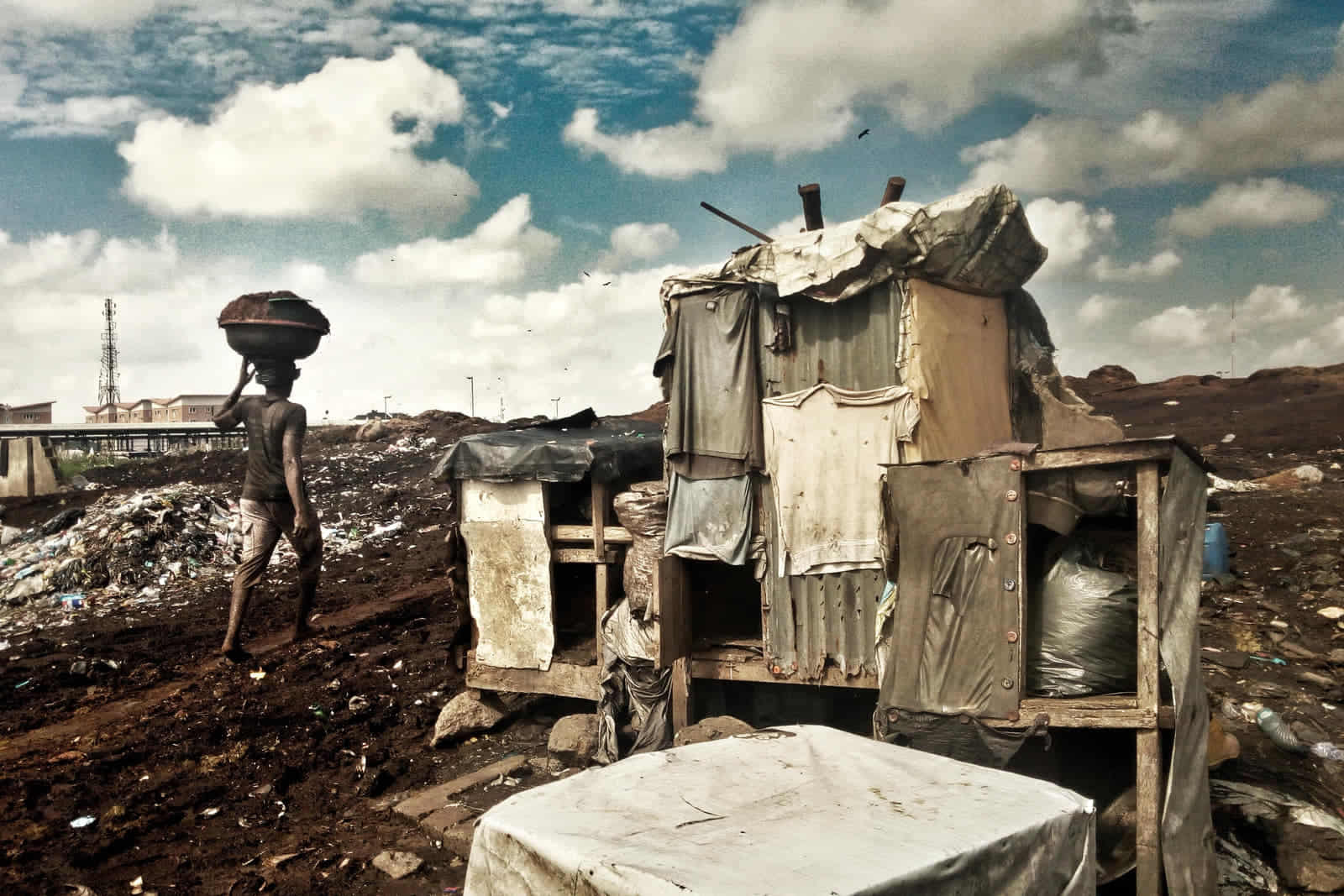
Another Word for Slums
From continent to continent and from country to country, whether they are called barrios, chawls, shantytowns, ghettos, or favelas, another word for slums are urban areas where the impoverished reside. While the geopolitical culture of slum areas may differ, the social context is often quite similar.
Below is an overview of the world of slums and the people who live in them.
Our flight had been descending through the dark, moonless night over the Southern Caribbean. During an earlier conversation, the gentleman seated next to me had already ascertained that this was my first trip to Caracas. As the plane banked slightly, he directed my attention toward the window, adding, “You need to see this.”
I was awestruck at the sight of thousands of brilliant, shining stars suspended in the blackness. I realized that my seatmate had been waiting for this moment to break the news that what I thought were stars were not.
“Everyone arriving here for the first time thinks they are stars,” he told me. “What you see are the lights from the barrios.”
“Barrios?”
“Yes, barrios. Many of the slums of Caracas are built on the mountainsides. They have no electricity, so they ‘steal’ it by tapping into the electric lines, then running a wire to power a single bulb at their front doorway for security at night. You will see the slums with your own eyes in the morning. They will not be remotely like the field of stars you thought you were viewing.”
He was right. What I saw the next day was, in an odd sort of way, as challenging to comprehend as the view from the South Rim of the Grand Canyon. Sometimes the panorama was overpowering. At other times, the singular details captivated. I couldn’t decide which was worse: the personal plight so many suffered or the panoply of poverty that shadowed such vast areas.
I learned that, whether they are called barrios, chawls, shantytowns, ghettos, favelas, or any other name, slums are urban areas where the impoverished reside. From continent to continent and from country to country, the geopolitical culture of slum areas may differ, the social context is often quite similar.
Little did I realize, decades later, that this late-night flight would become the precursor to an endeavor to share the story of slums, life in them, and what can be done to improve them.
What about slums?
It is estimated that more than one billion people live in slums or ‘informal settlements.’1 That’s about 13 percent of the total world population. With that kind of numbers, you’d think we would be much better informed about life in slums.
Before we berate ourselves too much, we also need to realize that over 80 percent of those areas defined as slums exist in Asia and sub-Saharan Africa. Central and South Asia alone are home to nearly one-third of that 835 million person that comprise that 80 percent. These areas are well beyond our line of sight and our limited horizon.2 Our awareness is diminished by the proverbial “Out of sight; out of mind” syndrome.
Even though the United Nations estimates that the slum population will grow to three billion by 2030, we don’t think about slums or the people who live in them because they are not part of “our world.” We don’t think about them because we don’t know about them. It may also be true that we don’t want to know about them because, if we know about them, we also know that we will have to think about them. And, if we think about them, we might be confronted by our consciences convicting us to “find slumbody to love.” That alone may be worth the risk of reading the rest of this report.
What is a slum area?
According to Merriam-Webster, the definition of a slum area is “a densely populated, usually urban area, marked by crowding, dirty, run-down housing, poverty, and social disorganization.”3 Some of that might be entirely clear, but a dictionary definition is a place to begin.
The United Nations definition of a slum could be summarized as dwellings with a lack of minimum hygiene standards, infrastructure, and living spaces.
World Atlas.com paints a somewhat bleaker picture of “informal settlements in urban areas that are densely populated . . . [and] often characterized by substandard housing as well as squalor.”4 They expand on that by adding that “Many slums also may not have reliable sanitary services, electricity, a clean and consistent water supply, and law enforcement.”
The official slum definition created and used by the government of India applies to “areas where buildings are unfit for human habitation; or by reason of dilapidation, overcrowding, design of buildings, narrowness of streets, lack of ventilation, light or sanitary facilities or any combination of these factors, are detrimental to safety, health, or morals.”5
Learn more about Generational Poverty1 “Recognising the People Living in Slums.” World Urban Campaign. http://www.worldurbancampaign.org/psup/recognising-people-living-slums.
2 “Goal 11: Sustainable Cities and Communities.” UN Sustainable Goals. https://unstats.un.org/sdgs/report/2019/goal-11/.
3 “10 Worst Slums in the World.” The Borgen Project. https://borgenproject.org/10-worst-slums-in-the-world/.
4 “What Are Slums?” World Atlas. https://www.worldatlas.com/articles/what-are-slums.html.
5 “Mumbai’s Slums: The Positives and Negatives.” American University’s Undergraduate Policy Magazine. https://www.theworldmind.org/home/2019/3/1/mumbais-slums-the-positives-and-negatives.